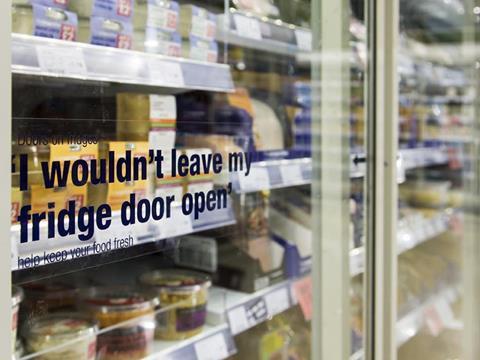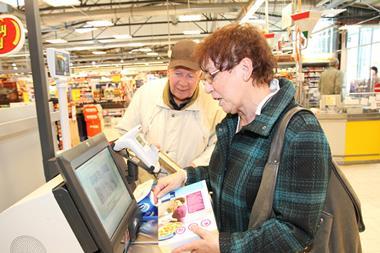
Since the dawn of the millennium, most of the major supermarkets have unveiled headline-grabbing new eco-stores - it was almost as if they were deliberately trying to outdo each other, despite the eye-bulging costs. But milestone projects such as the £28m biomass-powered Asda in Bootle and the opening of Tesco’s first carbon-neutral store in 2010 - which was nearly 30% more expensive to build than the average store - don’t sit so well in today’s age of austerity.
And the end of the supermarket space race has had a major knock-on impact on the eco-store agenda. Nowhere is more symbolic of the changing times than (appropriately enough) Greenwich, where Sainsbury’s pioneering “millennium superstore” - resembling a giant timber and solar panel-clad spaceship - is now deemed surplus to requirements. It is waiting to be bulldozed to make way for an Ikea, despite racking up a long list of environmental awards.
So what, if anything, are retailers doing to green up their estates? The answer is retrofitting.
“The retail industry is coming to terms with the fact it has this enormous overarching estate of stores it needs to find new uses for,” says Martin Chilcott, founder of sustainability experts 2degrees, which is working on projects with retailers including Tesco, Asda and M&S. “The last thing retailers want now is to be building a new eco-flagship. What we are seeing is a much more prosaic approach. The pilot stores were all about testing the technology, but the key thing now is to transfer those lessons into those huge estates.”
In 2010, Tesco accompanied the opening of its carbon-neutral store in Ramsay, Cambridgeshire, with the announcement it was ploughing £100m into projects with environmental companies - a move unimaginable given its other priorities.
Four years on, you only have to travel 25 miles to Tesco’s Wisbech Extra, which opened in February, to see how radically its thinking has moved on. Wisbech is the first store in the UK to boast a CO2 refrigeration heat reclaim system (able to slash carbon emissions by 15%) and also features internal and external LED lighting, not just within the store but for all its external lighting, even the car par. But the most illuminating thing is how the retailer stresses the value for money and transferability of the technology, rather than its standalone eco-credentials.
“Most customers will be blissfully unaware that they are shopping in one of the UK’s most advanced and energy-efficient supermarkets,” says a Tesco spokesman. “But what is outstanding is that we were able to build the store at no extra cost compared to a standard store of this size. In fact it was 3% less.”
Tesco says it is now planning a much wider retrofit of the ideas trialled at Wisbech to other stores across its estate.
M&S, seen by many as the market leader when it comes to sustainability thanks to its Plan A project, has also switched the onus to achieving “scale and pace” in its retrofit programme. It’s just two years since the retailer launched its “biggest, greenest store” in Cheshire Oaks, which promises energy efficiency and carbon savings of 40%-plus. But M&S admits there are unlikely to be many, if any, further projects on such a scale in the UK, though it insists the lessons from Cheshire are being fed back to its 1,000 other stores.
Trial stores
The reality is that the opening of a much smaller trial store in Sheffield, in 2011 - since followed by three others - could look more like the everyday stores we see in future rollouts. The Simply Food store, complete with “living roof” and green “wildlife-friendly” walls, cost £5m - a drop in the ocean compared with Cheshire Oaks. It is also much more in tune with the trend towards convenience and is an example of the way retailers are trying to turn sustainability into a shopper draw by making stores nicer places to be in.
“In the UK we are seeking innovation that can be retrofittable and not just used in our new stores,” says Munish Datta, head of Plan A and facilities management at M&S. And despite overseeing spectacular stores like Cheshire Oaks, Datta claims the humble LED light is the most significant innovation yet in store sustainability. M&S is retrofitting LED lights in 100 of its stores this year alone, while last month one of the brightest spots in Asda’s financial results was that the move to introduce LED lighting at 250 of its stores had slashed energy bills at those stores by a whopping 45%.
“I don’t know of any major retailer that doesn’t have an LED rollout plan scheduled for the next two years”
LED is a classic example of how previously unsexy sustainability ideas have come to the fore. According to BRC figures, electricity accounts for 77% of total energy consumption in the retail industry and 90% of overall energy costs, with lighting taking up 43% of consumption. “I don’t know of any major retailer that doesn’t have an LED rollout plan scheduled for the next two years,” says Andrew Bolitho, BRC Energy, property and transport policy adviser. “We are talking about absolutely astronomical savings there to be had.”
New modelling by the BRC for a report due out later this year, seen by The Grocer, suggests a 25% reduction in the whole of retail would be worth a massive £13.2bn in cumulative savings over five years,” says Bolitho.
“A single halogen GU10 downlight requires 50 watts of power,” adds Steve Thomas, a consultant working for Integral LED, which has just launched a new LED lamp it claims provides more light than the average 50-watt halogen lamp, despite using a mere 6.8 watts of energy. “A typical corner shop requires 10 to 20 of these,” he adds. “In a window display that’s the equivalent of boiling a kettle 24/7.”
“With LED you can drop anything between 70% and 80% of the energy used,” says Ollie Rosevear, Costa Coffee’s energy and environment manager, who says the supermarkets deserve credit for having driven down the cost of technology such as LED.
Payback in under a year
Rosevear is spearheading a retrofit across Costa’s estate (it began in new stores in 2011) and adds: “The impact on cost has been so great we started seeing payback in under a year, which is just remarkable.”
Supermarkets including Asda, Sainsbury’s and Tesco will all, on 17 October, take part in a free energy management workshop in London, organised by the BRC and the Department of Energy & Climate Change, which will aim to pass on the secrets of zero-cost and low-cost changes that can be made to stores.
“This really is a quite unprecedented development,” says the BRC’s Bolitho. “Big companies have huge exposure to energy costs and for the last 20 years companies like Sainsbury’s and Tesco have been managing energy in their stores, but the big challenge now is how we get that message across to the smaller guys.”
As well as retrofits retailers are using behind-the-scenes stealth tactics to increase the efficiency of their estates. Earlier this month, Tesco signed a three-year deal with Elster EnergyICT, which will use a cloud-based platform to deliver real-time intelligence on the energy its stores are using to try to reduce emissions.
Morrisons had already gone down a similar route, last year hiring engineering company NG Bailey to take on the energy management of its 600 UK stores. “If a cold room door is left open, we will know about it instantly,” says Stuart Kirk, head of energy at Morrisons. And despite the focus on costs being greater than ever, it is not just the bean counters stores are turning to in order to help make them greener and more efficient.
In March, RBS launched a platform called Innovation Gateway, inviting inventors and SMEs to come up with new green ideas, the best of which it plans to trial across 2,500 retail and commercial buildings in the UK.
It claims the existing technology and solutions available to retailers and other businesses are only enough to help it achieve 25% of its resource efficiency goals.
“I think it is really bold for RBS to come out and say that it doesn’t yet have the answers for the remaining 75% of its goals,” says Chilcott of 2degrees, which is running the initiative. “This is going to lead to an explosion of new ideas. We’ve had pilot eco-stores, everybody has done that now. Now sustainability and store design are aligning not just to reduce environmental impacts but to go beyond that to creating a better shopping environment.”
So there could be a pipeline of more prototypes to come: just don’t expect the big retailers to be throwing hundreds of millions at them any time soon.
The retrofit technologies transforming stores

LED lighting: In 2013, lighting was responsible for 43% of total electricity used by retailers and is by far the biggest source of energy consumption by the UK’s grocers. After installing LEDs retailers have experienced typical reductions in energy costs of between 40% to 70%.
Natural gas powered refrigeration systems: Hydrofluorocarbons (HFCs) represent around 1.5% of total global warming already, but the BRC says that, unless action is taken to reduce the use of HFCs, this will increase by up to as much as 19% of total greenhouse gases by 2050. Many UK supermarkets have already signed up to begin the phase-out of high-carbon intensity refrigerants by 2015, and all of the leading supermarkets have signed up to a BRC plan to reduce emissions from refrigeration gases by 80% by 2020.
Chiller doors: Controversial and divisive they might be - they are seen by many retailers as a barrier to sales - but chiller doors have helped stores make big savings on their energy bills. The Co-operative Group claims that installing chiller doors across its 2,800-store strong estate slashed its average carbon emission from fridges by 40% - an impressive 20% of each store’s total energy bill.
Outsourced energy monitoring: Several leading retailers have outsourced the task of overseeing energy use across their estates to third-party engineers, who monitor energy use down to individual storage room level. Morrisons claimed last year to have slashed energy costs by 16% as part of a scheme across all its 500 stores and Tesco has followed suit this month.



















No comments yet